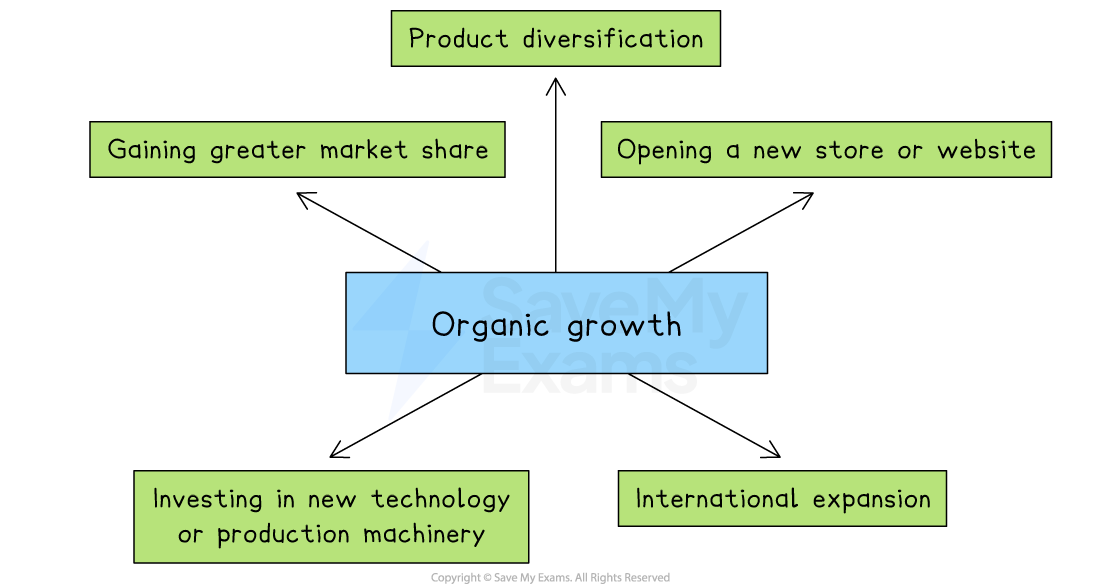Organic Growth (Edexcel A Level Business): Revision Note
Exam code: 9BS0
Organic business growth
Organic growth is growth that is driven by internal expansion using reinvested profits or loans

Types of organic growth
Gaining greater market share
By attracting more customers from competitors or increasing sales to existing customers, a business can grow its revenue without merging or acquiring another firm
E.g. Aldi has gained UK market share by offering low prices and expanding its product range
Product diversification
Launching new products allows a business to target new customer needs, increase sales and reduce reliance on just one product
E.g. Innocent has moved from smoothies into fruit juices and snacks
Opening a new physical or online store
Expanding the number of physical locations helps a business reach more customers and grow sales in new areas
E.g. Greggs has opened new outlets across the UK high street and within travel hubs such as railway stations
Launching an online store helps a business reach more customers and grow sales in new areas or through new channels
E.g. Primark launched its online click-and-collect service to reach more customers while keeping its focus on physical stores
International expansion
Selling products in other countries allows a business to access larger markets and benefit from new customer bases
E.g. WH Smith has expanded into airport locations worldwide whilst reducing its presence on UK high streets
Investing in new technology or production machinery
Improving production efficiency can increase output and reduce costs, allowing a business to meet rising demand and grow
E.g. Jaguar Land Rover invested in robotics and automation at its Solihull factory to boost production of electric and hybrid vehicles, helping it grow in the fast-changing automotive market
Evaluating organic growth
Advantages | Disadvantages |
|---|---|
|
|

Unlock more, it's free!
Did this page help you?